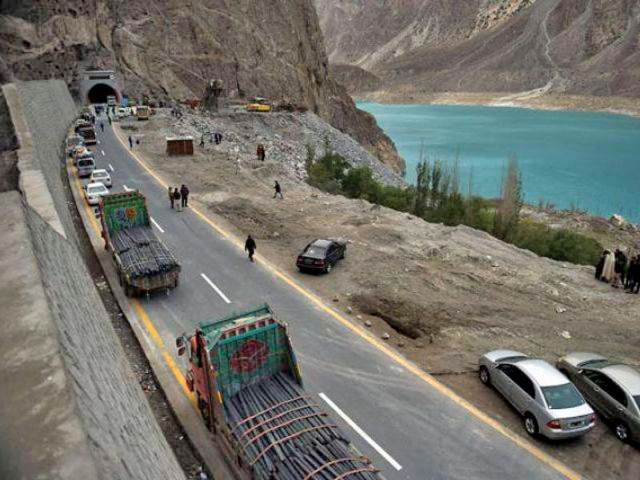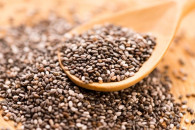Analysing the composition of CPEC-related imports
Inflow of raw materials witnesses 7% decline, capital goods rise by 30%

PHOTO: AFP
The data on trade from the State Bank of Pakistan (SBP) indicates that imports were at their highest level ever reported, at $48.5 billion, in the period between July and May in FY17. The imports into Pakistan increased by more than 20%, while exports declined by more than 3%. The imports between January and May in 2017 were 30% higher than the imports between January and May in 2016.
CPEC will bring economic stability: Achakzai
The trade deficit in FY17 is expected to surpass $30 billion. This is an increase of more than 40% over FY16. The inflow of remittances, which has over the recent years been crucial in reducing the current account deficit, is decreasing. The negative current account balance is expected to breach $9 billion in FY17, which is almost 200% more than that reported in FY16.
World Integrated Trade Solutions (WITS) classifies the imports not only according to the basis of different stages of production, such as raw materials, intermediate goods, consumer goods and capital goods, but also according to the major sectors of the economy, which are agricultural, industrial and petroleum goods. The trade data is borrowed from UN COMTRADE and the data spans the calendar year.
In 2016, 43% of the goods imported into Pakistan were in the form of raw materials and intermediate goods, which require further processing before being sold as finished goods, 31% were consumer goods and 25% were capital goods. Considering the major sectors, 12% of the total imports into Pakistan were petroleum goods, 14% were agricultural goods and 74% were industrial goods.
However, the imports of raw materials declined by more than 7% between 2015 and 2016, the imports of intermediate goods declined by more than 1.5%, the imports of capital goods increased by 30% and the imports of consumer goods increased by 7%.
Considering the growth of imports at the product-level, the import value of machinery and mechanical appliances increased by more than 30% between 2015 and 2016 and the import value of vegetable products increased by more than 27%. Significant increase in import value was reported in capital goods such as steam and gas-turbines, electric transformers and parts of auxiliary power plants and other equipment used in power plants. Further, there was a significant increase in the imports of construction equipment such mechanical shovels, self-propelled graders and levelers, and bulldozers. On the other hand, vegetable products such as barley, beans, chickpeas, apples reported significant increase in value between 2015 and 2016.
Pakistan imported $13.7 billion from China in 2016, which amounts to 30% of its total imports from all trading partners. It is likely that the trading relationship between Pakistan and China will further expand. It is crucial to understand the changing composition of the imports into Pakistan from China as well, particularly as the rapid increase in the imports from China has an important influence on the trade deficit of Pakistan. Approximately 47% of the imports from China in 2016 were capital goods, 16% were consumer goods, 35% were intermediate goods and only 1% was raw materials. Furthermore, 98% of the total imports from China were industrial goods.
On the other hand, 55% of all capital goods imported into Pakistan originated from China, 15% of consumer goods originated from China, and 34% of intermediate goods originated from China but only 2% of raw materials originated from China. Considering the imports at the product-level, 46% of the imports into China from Pakistan in 2016 were machinery and mechanical appliances, 10% were base metals, 11% were chemical products and 11% were textile products. However, the imports from China constituted 61% of all imports of machinery and mechanical appliances into Pakistan, 18% of all base metals and 14% of all textile products in 2016.
The import value of capital goods into Pakistan from China increased by 50% between 2015 and 2016, the import value of raw materials, although negligible from China, increased by 44% and the import value of consumer goods increased by 13%. Considering the imports at the product-level, the largest increase was reported in that of machinery and mechanical appliances at 49%, vegetable products at 40% and transport equipment and wood articles at 30%.
The imports of generators, turbines for power plants and their parts and accessories, as well as iron and steel products from China reported significant increase between 2015 and 2016. On the other hand, there has been a decline in the import value from China of machinery used in the agricultural sector as well as in the textile industry between 2015 and 2016.
Although, the analysis above primarily suggests that CPEC projects have contributed to the rising import bill, it is also important to stress that the imports of raw materials and intermediate goods have declined, while the imports of consumer goods has increased. With limited growth in major export-oriented industries in Pakistan, this is likely to contribute to the rising import bill as domestic value addition, which is conversion of raw materials and intermediate goods into finished goods locally, is being substituted in favor of value addition in the trading partners, even within the major exported oriented industries. For instance, the total imports of finished textile products increased by 9% between 2015 and 2016, while exports reported a meagre increase of 2%.
Pakistan, China to jointly oversee CPEC projects
Although, the decline in the imports of raw materials and intermediate goods may have been driven by lower commodity prices, the recurring lower growth levels in the agricultural sector and major export-oriented industries is increasing the difference between imports and exports and consequently the trade deficit. The burgeoning trade deficit and the lack of investments to improve the productive capacity raise serious concerns regarding the policies for industrial development in Pakistan.
The writer is Assistant Professor of Economics and Research Fellow at CBER, IBA
Published in The Express Tribune, July 10th, 2017.
Like Business on Facebook, follow @TribuneBiz on Twitter to stay informed and join in the conversation.


















COMMENTS
Comments are moderated and generally will be posted if they are on-topic and not abusive.
For more information, please see our Comments FAQ